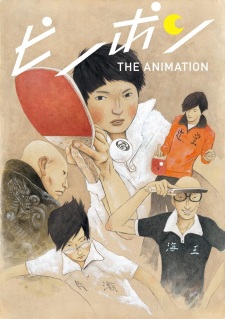
Ping Pong the Animation
Summary: Despite being polar opposites, Makoto "Smile" Tsukimoto and Yutaka "Peco" Hoshino have been best friends since childhood. Although the overly confident Peco strives to be the best ping-pong player in the world, he often skips practice, earning the ire of his fellow teammates on the Katase High School ping-pong team. Meanwhile, Smile—in spite of his innate talent for the sport—cannot help but hold back his full strength when playing against others. Through their mutual love for ping-pong, the two have developed a bond that is seemingly unbreakable.
When Peco hears that an ex-national team player from China is coming to Japan, he drags Smile over to rival Tsujido High School to observe them. The subsequent trip leads to a clash between Peco and Kong Wenge, who overwhelmingly defeats the former in one game. Stunned by such a comprehensive loss, Peco finds himself questioning why he plays to begin with. Seeing his potential as a player, Katase's coach begins to train Smile to overcome his hesitation, but he is reluctant to play if it is not for enjoyment.
As the two struggle to find meaning in the sport, a plethora of stronger players—each with their own internal strifes—await them at the inter-high tournament, where only the very best can persevere. But when these young athletes let their unbridled ambition go unchecked, the hardships they face paint a somber reality as they pursue glory.
[Written by MAL Rewrite]
Description
Despite being polar opposites, Makoto "Smile" Tsukimoto and Yutaka "Peco" Hoshino have been best friends since childhood. Although the overly confident Peco strives to be the best ping-pong player in the world, he often skips practice, earning the ire of his fellow teammates on the Katase High School ping-pong team. Meanwhile, Smile—in spite of his innate talent for the sport—cannot help but hold back his full strength when playing against others. Through their mutual love for ping-pong, the two have developed a bond that is seemingly unbreakable.
When Peco hears that an ex-national team player from China is coming to Japan, he drags Smile over to rival Tsujido High School to observe them. The subsequent trip leads to a clash between Peco and Kong Wenge, who overwhelmingly defeats the former in one game. Stunned by such a comprehensive loss, Peco finds himself questioning why he plays to begin with. Seeing his potential as a player, Katase's coach begins to train Smile to overcome his hesitation, but he is reluctant to play if it is not for enjoyment.
As the two struggle to find meaning in the sport, a plethora of stronger players—each with their own internal strifes—await them at the inter-high tournament, where only the very best can persevere. But when these young athletes let their unbridled ambition go unchecked, the hardships they face paint a somber reality as they pursue glory.
[Written by MAL Rewrite]
Available At
Warning: Array to string conversion in /home/hianime.me.uk/public_html/anime.php on line 243
Array
Ping Pong the Animation Trailers
Ping Pong the Animation Pictures
Ping Pong the Animation Review
Ping Pong the Animation — Despite being polar opposites, Makoto "Smile" Tsukimoto and Yutaka "Peco" Hoshino have been best friends since childhood. This overview is intentionally spoiler-free and focuses on tone and intent rather than plot specifics.
Thematically, It sits firmly within Award Winning, Drama, Sports conventions as a TV work and has garnered attention (MAL score: 8.62). This work explores character dynamics, tonal shifts, and the interplay between narrative ambition and execution. The story's pacing and tonal choices are crafted to complement the central ideas, often emphasizing atmosphere and emotional truth over explicit exposition. The show's ability to evoke a consistent mood — whether melancholic, exuberant, or contemplative — is a recurring strength, and the scenes are constructed so viewers can infer stakes without needing explicit spoilers.
Characterization is a core pillar here. Protagonists and supporting figures are written with distinct motivations and narrative roles; even when archetypal, the series invests in small behavioral details that make choices feel earned. Character arcs are handled with an eye for gradualism: development often arrives through incremental beats rather than abrupt, expository shifts. The interactions between characters create texture, and relationships are used to illuminate both personal flaws and larger thematic concerns.
On the visual front, production values play a significant role. The animation quality varies by sequence but frequently showcases thoughtful direction and composition. Background art, framing, and color palettes are used deliberately to support tone — quieter scenes favor muted palettes while action or heightened emotional beats employ brighter, more kinetic visuals. Direction choices, such as camera movement and shot selection, often elevate scenes beyond their raw script, creating moments that linger in the viewer's mind.
The soundscape — score, incidental music, and sound design — complements the visual language. Music cues are placed to maximize emotional resonance without manipulating the audience with melodrama; this restraint often leads to more authentic emotional payoff. Sound design punctuates key moments, and when the series leans on silence, those quieter moments are given weight by measured audio choices.
Pacing and structure are handled with craft. Episodes are arranged to build tension and release methodically, and the narrative rarely rushes through important emotional beats. That said, the deliberate pacing may feel slow to viewers who prefer faster plot turnover; the reward is greater nuance and an accumulation of meaning across the series. Accessibility is generally good — one can appreciate surface-level pleasures, while repeat or attentive viewing reveals additional layers.
No title is without flaws. Occasional unevenness in subplots or variable animation across episodes can be distracting. Some tonal shifts might feel abrupt if you expect uniformity; others will argue that those shifts are purposeful. These are worth noting, but they seldom undercut the larger achievements of the work.
In sum, Ping Pong the Animation offers a rich experience for viewers who value character-driven storytelling, considered visual design, and a soundtrack that supports rather than overwhelms. For fans of Award Winning, Drama, Sports, this is an especially rewarding watch. It's recommended for those who appreciate layered narratives and artistry in animation, and best approached with patience and attention to nuance.
Characters & Voice Actors

Hoshino, Yutaka
Main

Hoshino, Yutaka
Main

Hoshino, Yutaka
Main

Hoshino, Yutaka
Main

Hoshino, Yutaka
Main

Tsukimoto, Makoto
Main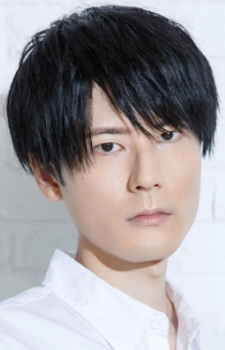

Tsukimoto, Makoto
Main

Tsukimoto, Makoto
Main

Tsukimoto, Makoto
Main

Tsukimoto, Makoto
Main

Dotechin
Supporting
Egami
Supporting

Egami
Supporting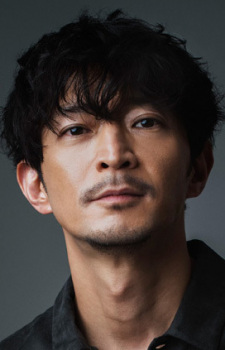

Emiko
Supporting

Emiko
Supporting

Hama-chan
Supporting

Kazama, Ryuu
Supporting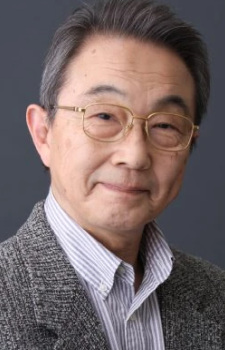

Kazama, Ryuu
Supporting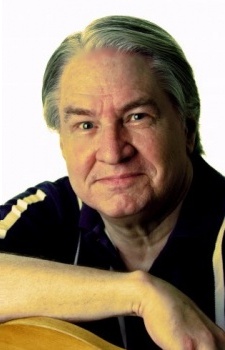

Kazama, Ryuuichi
Supporting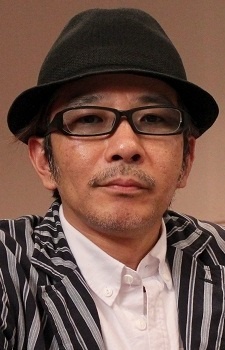

Kazama, Ryuuichi
Supporting
Staff

Cook, Justin
Producer

Fujio, Tsutomu
Producer

Shintaku, Youhei
Producer

Yuasa, Masaaki
Director, Episode Director, Script, Storyboard, Series Composition, Key Animation

Kimura, Eriko
Sound Director

Choi, Eun-Young
Episode Director, Key Animation, Assistant Director

Heo, Pyeonggang
Episode Director

Itou, Hideki
Episode Director, Key Animation, Animation Director

Itou, Ryouta
Episode Director, Key Animation

Kubota, Takehiro
Episode Director

Ohira, Shinya
Episode Director, Storyboard, Animation Director, Key Animation

Ueno, Fumihiro
Episode Director

Utsunomiya, Masaki
Episode Director

Bakudan Johnny
Theme Song Performance

Merengue
Theme Song Performance

Anzai, Toshiyuki
Key Animation

Aoyagi, Shigemi
Key Animation

Asano, Naoyuki
Animation Director

Bahi JD
Key Animation

Bevins, Christopher
ADR Director